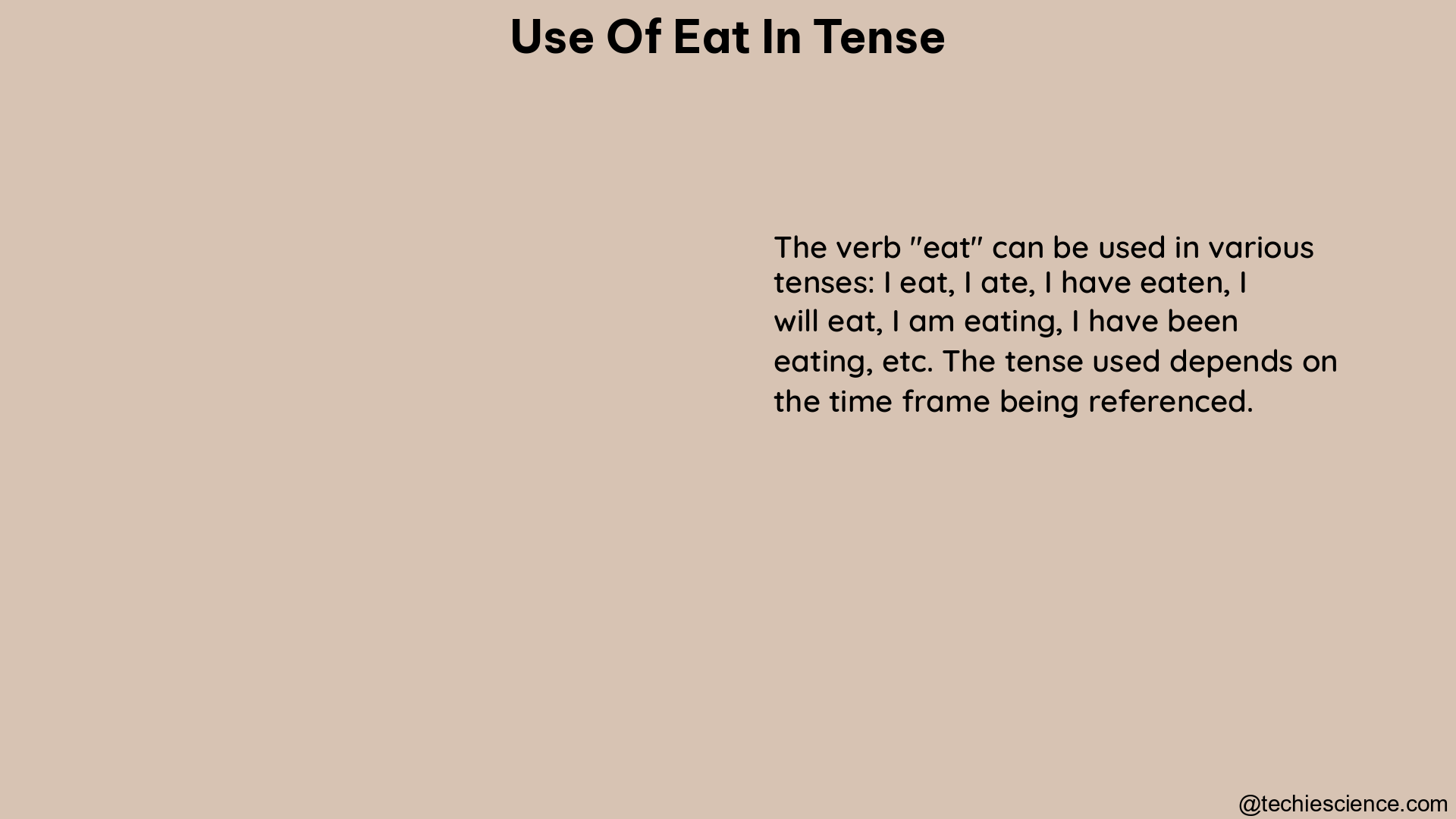The verb “eat” is an irregular verb in the English language, which means its conjugation does not follow the standard rules. Understanding the proper usage of “eat” in different tenses is crucial for effective communication. This comprehensive guide will delve into the intricacies of using “eat” in various tenses, providing you with a thorough understanding of this versatile verb.
Present Tense
In the present tense, the base form of the verb “eat” is used. This form remains the same regardless of the subject.
- Example: I eat breakfast every morning.
- Example: She eats a healthy lunch every day.
- Example: They eat dinner together as a family.
Past Tense

The past tense of the verb “eat” is “ate.” This form is used to indicate an action that occurred in the past.
- Example: I ate a delicious meal at the new restaurant last night.
- Example: She ate her entire plate of food without leaving a single crumb.
- Example: They ate at the same restaurant every week for the past year.
Past Participle
The past participle of the verb “eat” is “eaten.” This form is used in the perfect tenses, such as the present perfect, past perfect, and future perfect.
- Example: I have eaten at this restaurant before.
- Example: She had eaten her lunch before the meeting started.
- Example: By the end of the week, I will have eaten at every restaurant in the city.
Perfect Tenses
The perfect tenses, including the present perfect, past perfect, and future perfect, utilize the past participle “eaten” to indicate completed actions.
- Present Perfect: I have eaten at this restaurant.
- Past Perfect: I had eaten at this restaurant twice before tonight.
- Future Perfect: After tonight, I will have eaten at this restaurant three times.
Passive Voice
The past participle “eaten” is also used in passive voice constructions, where the subject receives the action of the verb.
- Example: The almonds were eaten by a bunch of squirrels.
- Example: The delicious meal was eaten by the hungry guests.
- Example: The cake has been eaten by the children.
Other Tenses
The verb “eat” can also be used in other tenses, such as the present progressive, past progressive, future, and future progressive.
- Present Progressive: I am eating lunch.
- Past Progressive: I was eating lunch when you called.
- Future: I will eat lunch at the park tomorrow.
- Future Progressive: I will be eating lunch at the park tomorrow.
Examples
Here are some additional examples to further illustrate the usage of “eat” in different tenses:
- I ate macaroni last night.
- She has eaten three pieces of cake before anyone else even finished one.
- Dan had already eaten breakfast by the time the sun came up.
- You ate at my uncle’s restaurant, but you still have never eaten his world-famous lasagna.
Conjugation
The full conjugation of the verb “to eat” includes the following forms:
- Conditional Present: would eat
- Conditional Present Progressive: would be eating
- Conditional Perfect: would have eaten
Similar Verbs
The pattern of “ate” and “eaten” is similar to other irregular verbs in the English language, such as:
- “Give” (gave, given)
- “Beat” (beat, beaten)
- “Drive” (drove, driven)
Quiz
To test your understanding of the various forms of the verb “eat,” you can try a quiz on the topic. This will help reinforce the concepts and ensure you have a solid grasp of the usage of this irregular verb.
References:
1. https://www.thesaurus.com/e/grammar/eaten-or-ate/
2. https://en.bab.la/conjugation/english/eat
3. https://www.wordreference.com/conj/enverbs.aspx?v=eat
4. https://www.ecenglish.com/learnenglish/lessons/eat-ate-eaten
5. https://www.writingenglish.com/cverbs/eat.htm

Hi…..I’m a graduate with a Bachelor’s degree in English Literature. I wish to do a Masters in the same field someday and continue my career in Academia.
Let’s connect through LinkedIn: